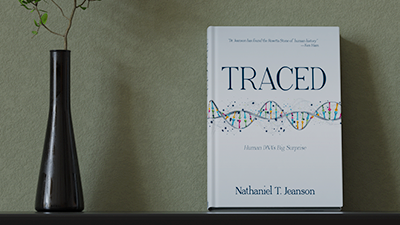Kinds of Man
News Source
- BBC NEWS: "Ancient human unearthed in China"
Researchers have announced in the Proceedings of the National Academy of Sciences the discovery of “34 bone fragments belonging to a single” thought-to-be early modern human in China. The bones have been radiocarbon dated to some 40,000 years ago (but see our Radiometric Dating Q&A to read how accurate such dating really is).
Evolutionary scientists are trying to fit this in with the current “Out of Africa” model of human origins, which postulates that the first humans evolved in Africa, then “spread out across the globe about 70,000 years ago,” supplanting supposed proto-humans (e.g., Neandertals) in their path.
Now comes the twist:
The [fragments] display diagnostic features of modern H. sapiens. But co-author Erik Trinkaus and his colleagues argue, controversially, that the bones also display features characteristic of earlier human species, such as relatively large front teeth.
Adam’s descendants, which included such varieties as Neandertals, had a spectrum of variations, ... yet were all fully human and distinctly different from apes.
Trinkaus and his colleagues suggest in the PNAS article that this spectrum of features is a sign of “interbreeding between early modern humans […] and the archaic populations they encountered.” Trinkaus commented that such interbreeding would not be strange, given that “evidence […] suggest[s] two closely related species [… can] interbreed successfully.”
This evidence, however, fits much better with the biblical worldview, which places the origin of all humankind just a few thousand years ago. Adam’s descendants, which included such varieties as Neandertals, had a spectrum of variations (from “relatively large front teeth” to hair type, height, jaw shape, skin color, etc.), yet were all fully human and distinctly different from apes. Evolutionists have found such semi-Neandertal, semi-”modern human” remains before, but rather than showing transitional forms, such bones simply reflect the spectrum of design humanity originally had (of course, there’s still a spectrum today, albeit a narrower one).
One other interesting note from the article: the toe bone Trinkaus’ team discovered suggests the toe’s owner wore shoes. Forty-thousand-year-old shoes, perhaps?
For More Information: Get Answers
Remember, if you see a news story that might merit some attention, let us know about it! (Note: if the story originates from the Associated Press, FOX News, MSNBC, the New York Times, or another major national media outlet, we will most likely have already heard about it.) And thanks to all of our readers who have submitted great news tips to us. If you didn’t catch all the latest News to Know, why not take a look to see what you’ve missed?
(Please note that links will take you directly to the source. Answers in Genesis is not responsible for content on the websites to which we refer. For more information, please see our Privacy Policy.)
Recommended Resources

Answers in Genesis is an apologetics ministry, dedicated to helping Christians defend their faith and proclaim the good news of Jesus Christ.
- Customer Service 800.778.3390
- © 2024 Answers in Genesis







